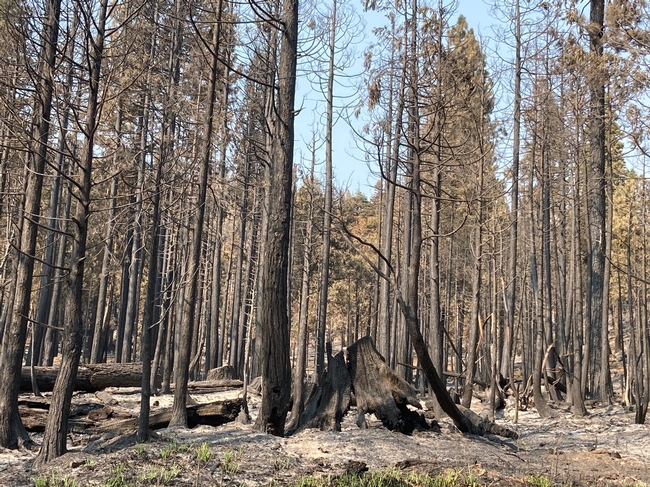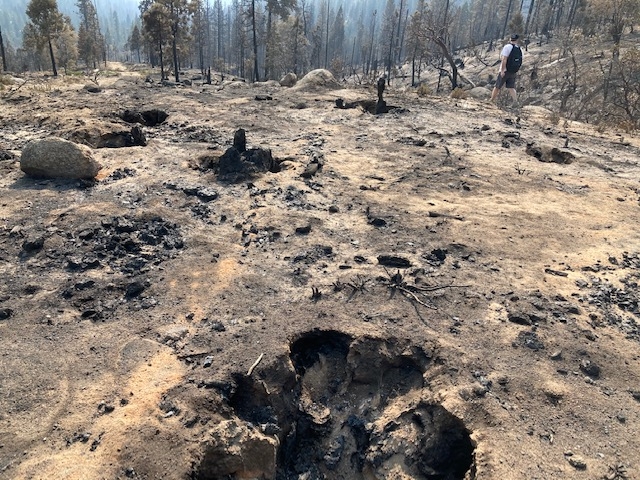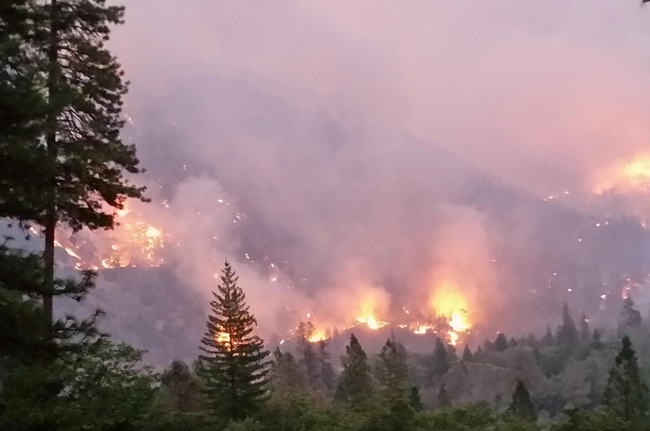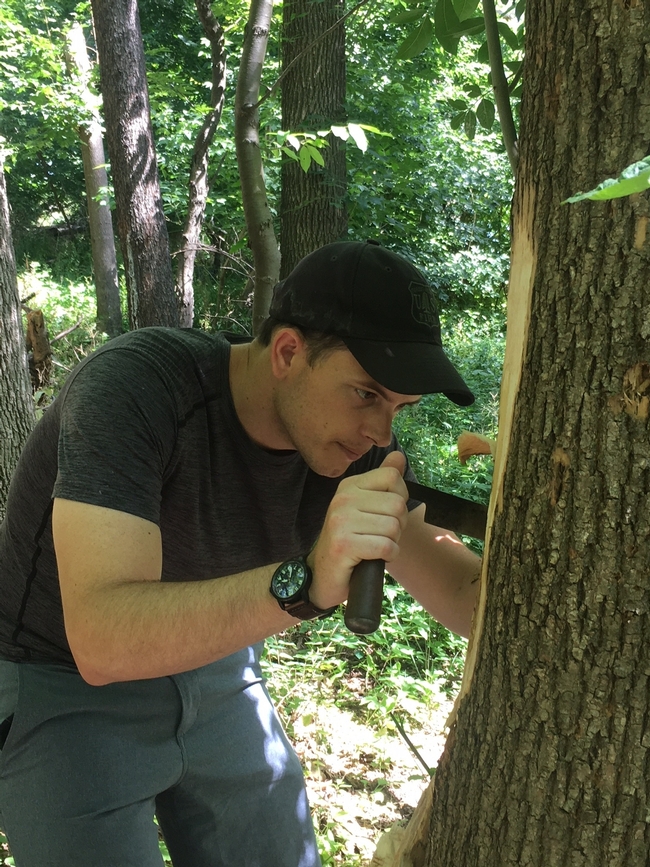Food & Health
Buy local to minimize the environmental impact of live Christmas trees
Christmas tree production is a big business that offers economic benefits and environmental impacts, reported Erin Blakemore in Popular Science.
Christmas trees' environmental tolls include fuel for helicopters to harvest and trucks to transport, but UC Cooperative Extension farm advisor Lynn Wunderlich says fertilizer and pesticide use are the main culprits.
"There is pesticide use across the board," she said.
Christmas tree farmers can use integrated pest management tools to reduce pesticide use, including monitoring for pests and natural predators and selecting pest resistant trees, such as Nordmann and Turkish firs.
Glyphosate is used to manage weeds between seedlings and on the walkways between trees. Wunderlich said that since the herbicide is used in small quantities - and not on the trees themselves - consumers don't have to worry about herbicide residue in their homes.
Live Christmas trees benefit the environment by capturing carbon dioxide and storing it in their branches, roots and needles. Availability of the natural option also means fewer artificial trees are set up during the holidays.
"Artificial trees have major environmental impacts," Wunderlich said.
Since live tree impacts also stem from the distance consumers drive to purchase the trees, for the greenest tree possible, Wunderlich suggests getting to know your local tree farmer.
"Buy local, stay local," she said.
High-severity megafires don't preclude future fires
In less than a decade, some of the burned expanses from this year's megafires could burst into intense flames again, reported Ula Chrobak in Scientific American.
Frequent, low-severity fires, which clear out patches of low-lying vegetation and dry leaf litter, have an preventative effect. Research shows that areas burned by megafires are more likely to become susceptible to fires again.
UC Cooperative Extension forestry advisor Susie Kocher said that a century ago, before officials quashed all wildfires, only 5% to 10% of Sierra Nevada fires would burn at high severity. Today, the proportion of high-severity fires is between 40% and 60%.
“That's way outside of what we think would have been natural,” Kocher said.
After high-severity fires, the landscape is scorched and shadeless. Without mother trees, it may take a long time, or even be impossible, for conifers to move back in. With open land and sunlight, shrubs sprout amid downed dead pines, which over time accumulate dead twigs and leaves. If there is a spark, the shrubbery and fallen wood can sustain another large fire.
“Ultimately, all of these lands are going to need management within anywhere from two to 10 years —and probably closer to two to five years after a fire—to maintain that reduction in fuel,” said Kate Wilkin, a fire scientist at San José State University. As climate change makes California hotter and drier, increasing the propensity for monstrous fires, this need will only grow.
Wildfires are devastating to the soil
After another record year for California wildfire, concern is now turning to the soil impacted by firestorms, reported Sarah Klearman in the Napa Valley Register.
High-temperature flames can incinerate vegetation and destroy plant root systems, said Toby O'Geen, UC Cooperative Extension soil specialist at UC Davis. The loss of vegetation destabilizes the landscape, making it vulnerable to serious erosion or flooding.
"The most important way to battle erosion is to have surface cover - living vegetation anchoring your soil," O'Geen said. "We have none of that. If you have soil with existing susceptibility (to erosion) and now nothing to hold it in place, it's a new disaster."
Particularly catastrophic fire can make the soil surface water repellent, which allows water to pond up and release higher concentrations of run-off water even when rainfall is low.
"That creates more massive erosive events - it gives rise to accelerated erosion, and in some extreme instances, mudslides," O'Geen said.
Climate change is converting cities into 21st century ghost towns
In California, most ghost towns were created when a local industry collapsed. Now, climate change is more often to blame when booming communities whither and die, reported Daniel Cusick in E&E News.
In an eerie horror story released just before Halloween, Cusick wrote about five towns around the nation that have died or are dying from climate-related disasters. Historic Shasta and Helena, Calif., are featured in one of the vignettes.
"Those are two towns that are getting more ghostly," said Yana Valochovich, UC Cooperative Extension forestry advisor in Humboldt and Del Norte counties.
A 19th-century mining town, Shasta City had been a preserved tourist destination in Shasta State Historic Park since 1937 when it was burned in the 2018 Carr Fire, the seventh most destructive wildfire in California history. Helena, a 170-year-old pioneer mining settlement, burned in the Helena Fire of 2017.
There almost certainly will be more "dead towns" as fires consume more of Northern California, Valochovic added.
California must become a fire-adapted civilization, UCCE expert says
The vast California acreage burned in 2020 and the protracted smoky skies should signal state residents and officials to adapt to a new reality, reported Ezra David Romero on Capital Public Radio. The 4 million acres of wildland burned this year isn't unprecedented.
Before 1800, 4.5 million or more burned every year in California, according to a UC Berkeley study.
Tragic as they are, parts of the 2020 fires will bring some areas back to natural equilibrium.
"Some areas are going to be hit really hard . . . and will have trouble recovering," said Michael Jones, UCCE forestry advisor in Lake County. "But other areas will look phenomenal. They'll look fantastic and they'll do exactly what we want these systems to do."
However, the burns are unprecedented in California's modern, highly populated times.
“I don't think that we can have another season like this without something fundamentally shifting,” he said “This is another indication of how we need to think differently about how we approach managing fire, and how we need to become more of a fire-adapted civilization."
It may be "a tough pill to swallow," but Jones told Romero that smoky skies could become a year-long reality because of prescribed burns in cooler months and a prolonged wildfire season in the warmer months.
“People are exhausted,” Jones said, “they're scared and don't understand this fundamental shift and change.”
Jones says the current fire season should also force people to rethink where communities should be built.





